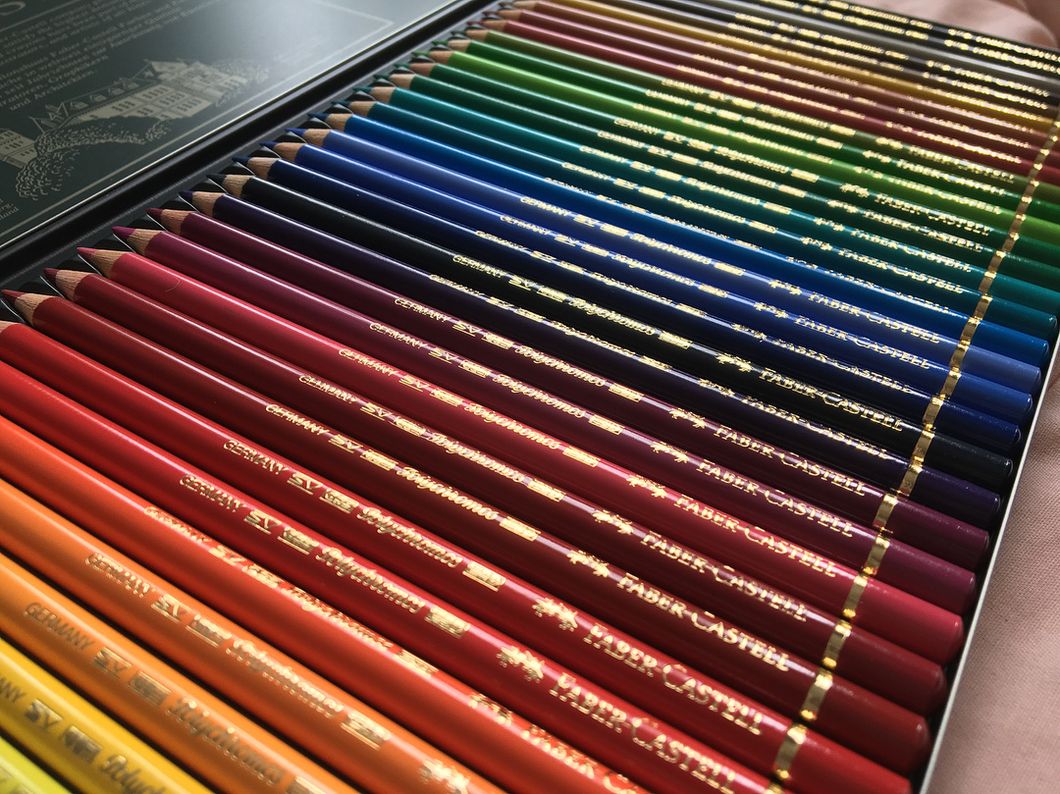I add the final graphite etchings onto the eye that I had been meticulously perfecting for the last hour, lightly dabbing my eraser on the highlight to give it that extra touch of realism. With bated breath, I pried myself away from the paper, excited to release a sigh of relief upon seeing a completed half-face; however, I pulled away only to release a scream of anguish as I was greeted with a set of eyes that were too close together and entirely different.
I felt like I had been living a lie; believing myself to be fairly skilled at art for the majority of my life, I momentarily felt the talent rush out of me in the form of eraser shavings (and admittedly a few tears). I had been at war with portraiture for weeks now, and I was finally holding up the white flag.
For some reason, I was under the misguided impression that mastering realism was the key to having artistic abilities. After all, it seems that the first question that leaves anyone's lips after hearing you're an artist is the oh-so-original "Wow, can you draw me?!" And, to my dismay, I could only ever answer with an awkward explanation about how portraiture isn't my thing.
However, after I regained my composure post-portrait-induced-meltdown, I realized that maybe my artistic talent wasn't entirely lost, and I came to a life-changing conclusion: realism just isn't for me. Whether it be in art or in my life, I constantly find myself rejecting what lies in front of me in favor of what could be, working toward bringing my often outlandish fantasies to fruition.
I retrieved my failed attempt at realism from the trash bin and straightened out its edges. Ditching my graphite pencil for a thin-tipped Sharpie and a set of watercolors, I transformed my portrait from Wadsworth to Warhol, reveling in the blend between realism and abstraction in the process. While my painting still resembled a realistically-drawn man, the color palette of hot pinks and lime greens I used to bring my inspiration to life added my signature whimsy to the piece. The final product, for lack of a better descriptor, was definitely "refrigerator worthy."
Now, portraits are my favorite kind of pieces to paint. Combining my lifelong love of impressionism and abstract art, I found a niche in portraits by playing with light, color, and contrast. While my works often leave people asking me "Why does she have green skin?" they are still authentically mine, each one being vastly different from the last while still holding my traditional whimsy in every brushstroke.
So, to my fellow artists who are constantly comparing themselves to other creators, my advice is simple: don't. Seeing flawless portrait artists execute scarily real pieces on my Instagram feed only made me feel more inferior, and it wasn't until I found my own style that I was able to take pride in my work. Essentially, find what you're good at, and make it unmistakably yours.
My experience with my first portrait embodies what I believe to be, at least for myself, the purpose of art -- bridging the gap between my two worlds: the one of reality and the one of my imagination. In everything I do, I have found that daring and creativity counterbalance the opposing forces of realism; and in my case, art is no exception.



 mr and mrs potato head
StableDiffusion
mr and mrs potato head
StableDiffusion












